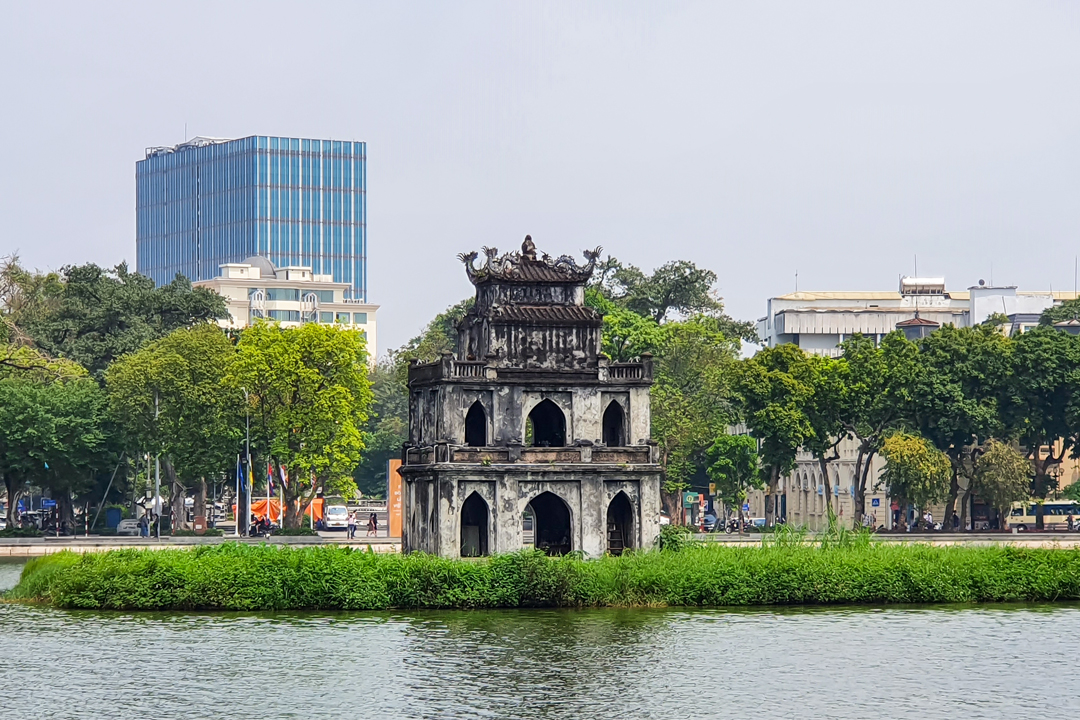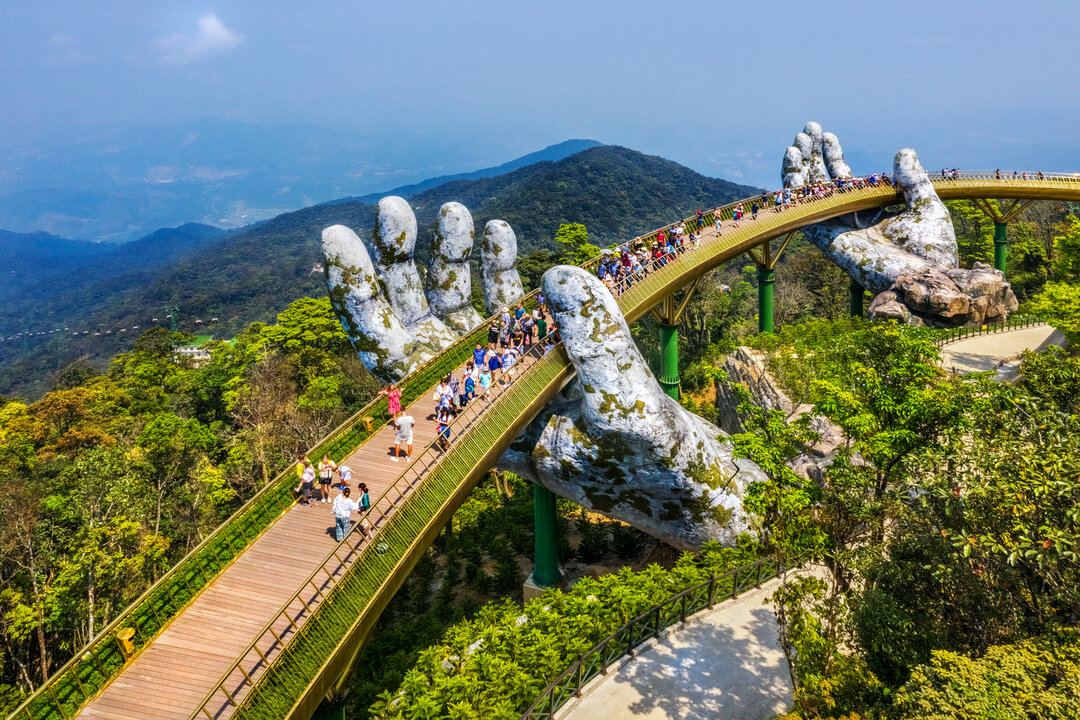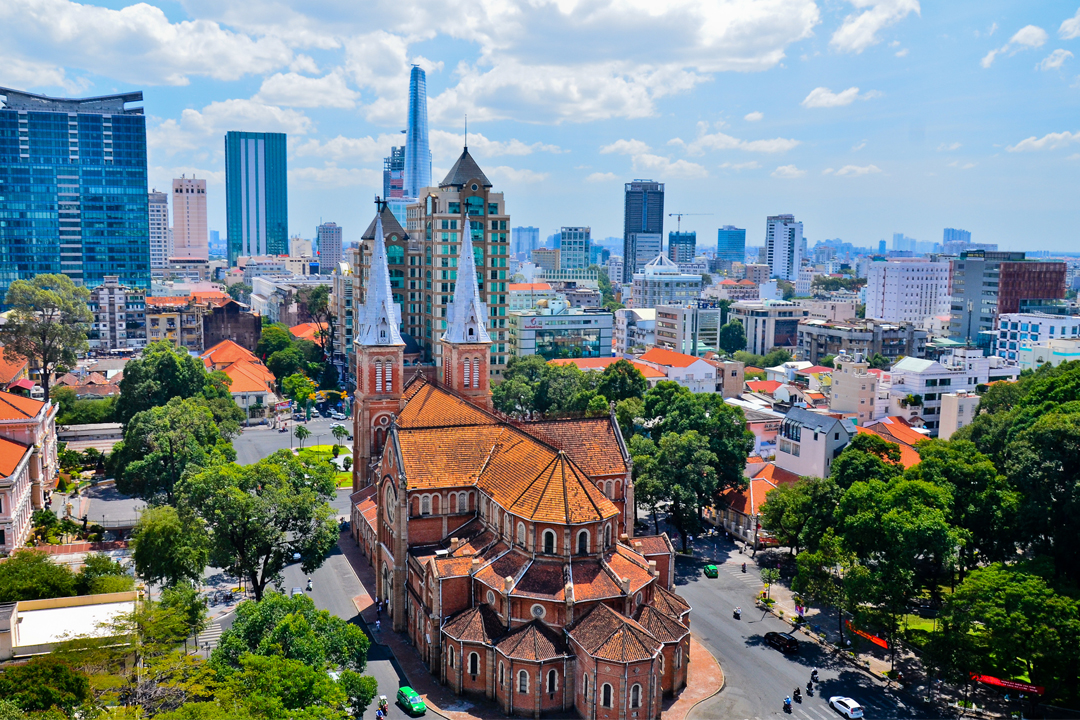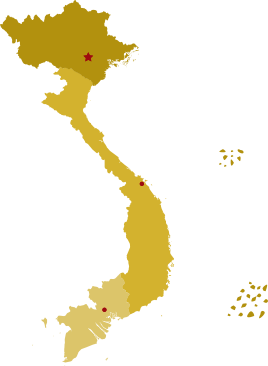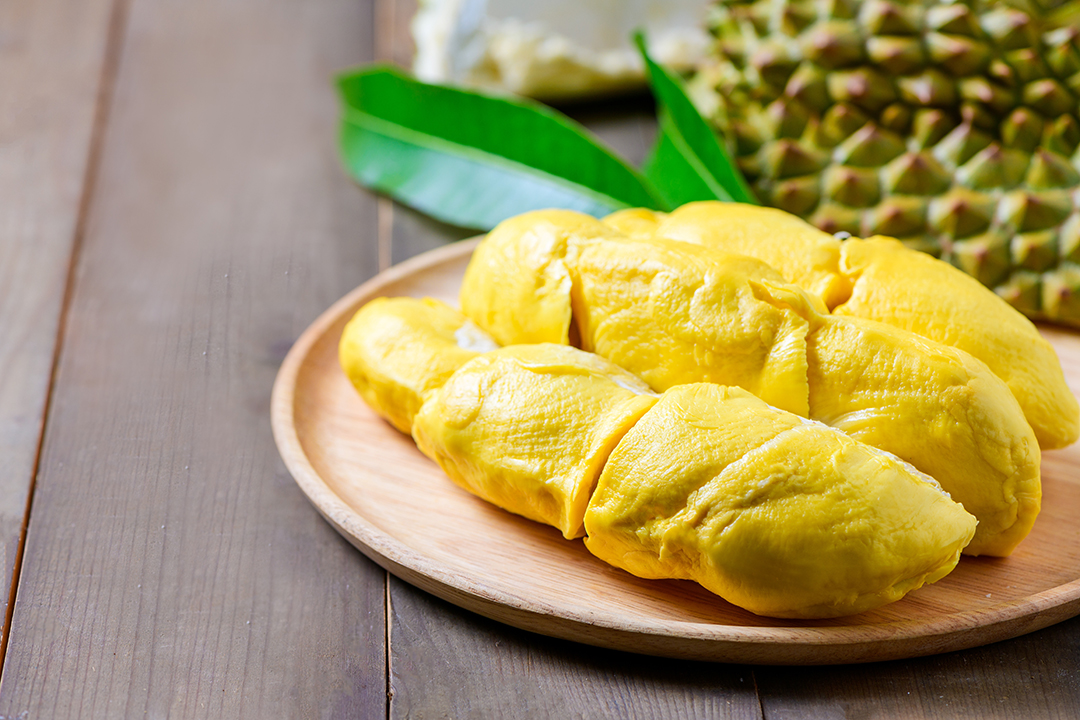Jul - 03 - 2025
Ho Chi Minh Museum in Hanoi stands as a powerful tribute to Vietnam’s revolutionary journey and the life of its most beloved leader. More than just a collection of historical artifacts, the museum offers a thoughtfully curated experience that blends political history with artistic expression. Each exhibition hall brings to life the ideals, struggles, and achievements that defined Ho Chi Minh’s legacy and the nation's path to independence. This guide by GTrip provides everything you need to explore the museum with ease, such as key highlights and exhibit themes to accessibility tips, and nearby cultural stops. Ideal for travelers seeking meaningful insight into Vietnam’s identity, the museum delivers a deeper understanding of the country’s past and the values that continue to shape its future.
Where is the Ho Chi Minh Museum and how to get there?
Ho Chi Minh Museum is located at 19 Ngoc Ha Street, Doi Can Ward, Ba Dinh District in Hanoi. This imposing structure stands as an integral part of the Ho Chi Minh Complex, positioned adjacent to the Ho Chi Minh Mausoleum and other significant national monuments. The museum occupies a prominent location in Hanoi's political center, reflecting its importance in preserving the legacy of Vietnam's revolutionary leader.
Finding your way to the Ho Chi Minh Museum is straightforward for visitors, with several convenient transportation options available:
Transportation options to reach the museum:
- Taxi and ride-sharing services: The most convenient option for international visitors, with services like Grab being widely available. Simply show the driver the address: 19 Ngoc Ha Street, Ba Dinh District.
- Motorbike rental: A popular choice for adventurous travelers, allowing flexibility to explore the surrounding area at your own pace.
- Walking: The museum is approximately 1.5 kilometers from Hanoi's Old Quarter, making it a pleasant 20-25 minute walk through the historic streets of Hanoi.
- Public buses: Routes 09, 22, and 34 stop near the complex, offering an economical transportation option.
The museum's strategic location within the Ho Chi Minh Complex means you can easily combine their visit with other significant attractions. The complex occupies a verdant, peaceful area despite being in central Hanoi, providing a respite from the city's bustling streets.
Regarding accessibility, the Ho Chi Minh Museum features wheelchair-friendly entrances and mostly accessible interiors, making it suitable for visitors with mobility limitations. The main exhibition halls have elevators, and pathways are generally wide enough to accommodate wheelchairs and strollers. However, it's advisable to contact the museum administration beforehand to inquire about the most current accessibility features or if you require specific assistance during your visit.
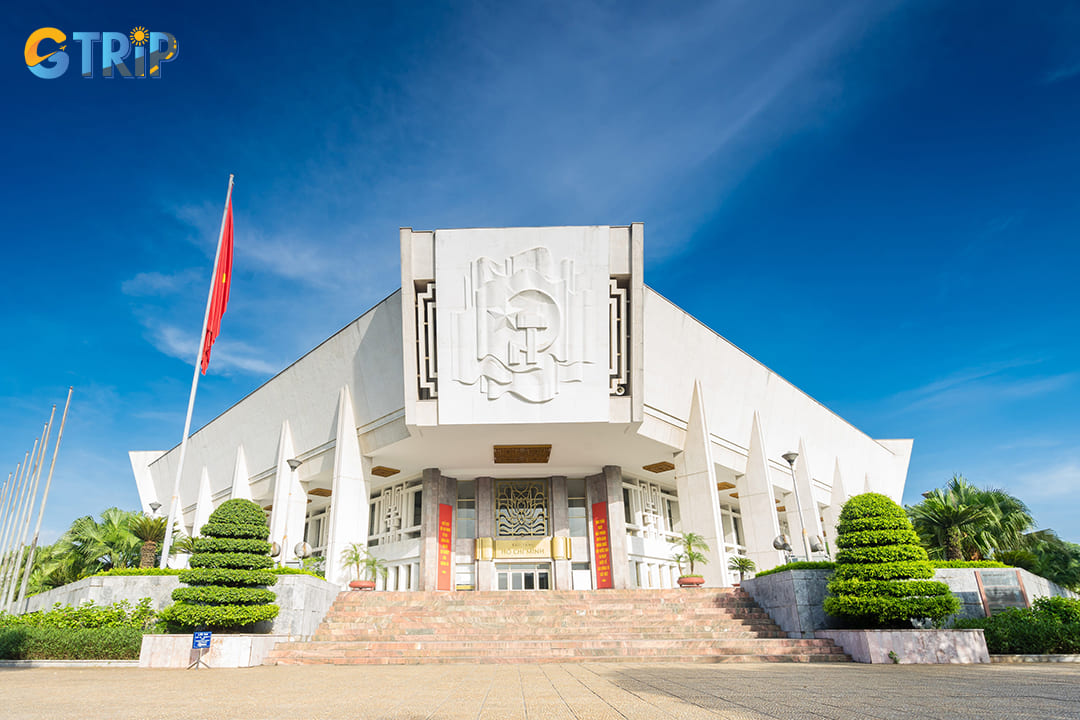
The Ho Chi Minh Museum occupies a prominent location in Hanoi's political center, reflecting its importance in preserving the legacy of Vietnam's revolutionary leader
Who is Ho Chi Minh?
Ho Chi Minh (1890-1969) was Vietnam's founding father and most revered revolutionary leader who dedicated his life to Vietnamese independence and unification. Born as Nguyen Sinh Cung in Nghe An province during French colonial rule, he adopted multiple aliases throughout his life before becoming known as Ho Chi Minh. His humble beginnings in central Vietnam contrasted sharply with his eventual emergence as one of the 20th century's most influential anti-colonial revolutionaries.
After leaving Vietnam at age 21, Ho Chi Minh spent nearly 30 years abroad, traveling through the United States, the United Kingdom, France, and the Soviet Union. This is where he embraced communist ideologies and developed his revolutionary vision. He founded the Indochinese Communist Party in 1930 and later established the Viet Minh independence movement that successfully fought against Japanese occupation during World War II. Following the historic Declaration of Independence in 1945, Ho Chi Minh led North Vietnam as president until he died in 1969. He didn't live to see his ultimate goal achieved: the reunification of Vietnam, which occurred in 1975.
Beyond his political leadership, "Uncle Ho" embodied simplicity and modesty despite his enormous influence. He lived in a modest stilt house rather than the grand Presidential Palace, wore simple clothing, and maintained a spartan lifestyle that reflected his belief in equality. His philosophical writings combined nationalism, Marxism, and traditional Vietnamese values, creating a unique ideology that continues to shape Vietnam's national identity and political system today.
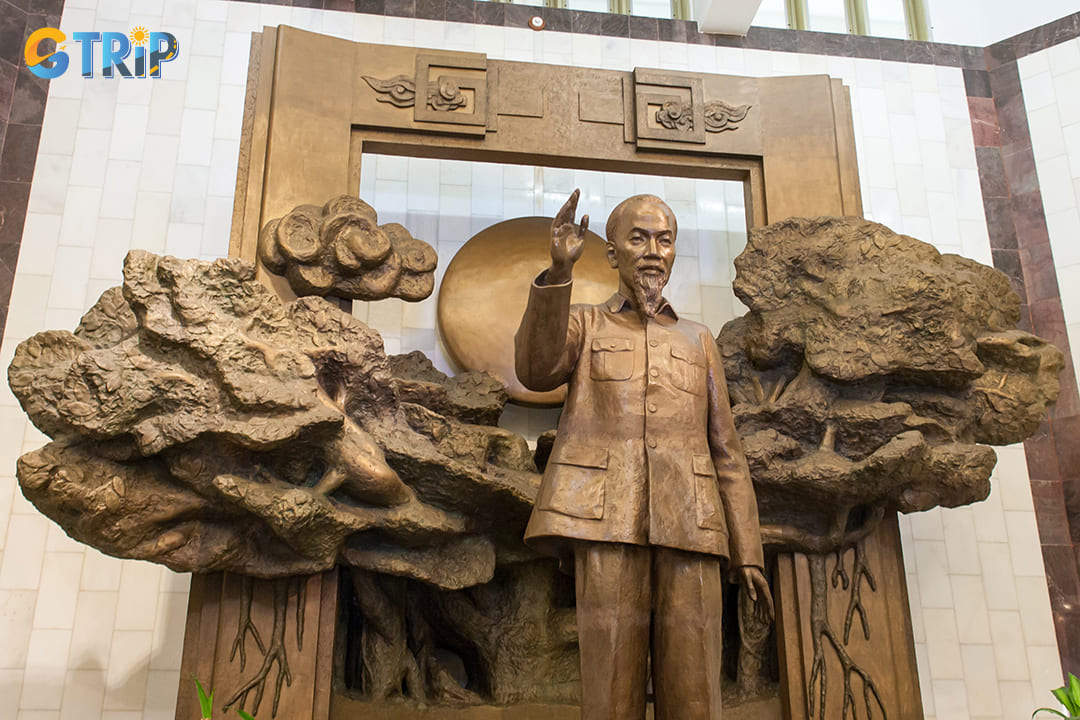
Ho Chi Minh was Vietnam's founding father and most revered revolutionary leader who dedicated his life to Vietnamese independence and unification
Entry fees and opening hours of the Ho Chi Minh Museum
The Ho Chi Minh Museum offers affordable access to visitors interested in learning about Vietnam's revolutionary leader, with different pricing policies for international and domestic tourists. Below, you'll find comprehensive information about ticket prices and visiting hours to help plan your visit efficiently.
Entrance ticket prices
- Standard ticket price: 40,000 VND per person (approximately $1.70) for all international visitors
- Group booking information: International groups should contact the Education Department at (+84.24) 38463757 - 38463752, ext.: 176 or (+84.24) 37341800 for special arrangements and potential group rates
- Guided tour options: Available in Vietnamese, English, French, and Chinese with prior arrangement through the museum office
Free admission categories:
- Vietnamese citizens (must present a valid ID)
- People with disabilities (wheelchair accessibility available at main entrances)
- Members of the International Council of Museums (ICOM) with valid membership cards
- Children under 6 years of age from all nationalities
Ticket purchase information:
- In-person purchase locations:
- Gate No. 1 of the Ho Chi Minh Museum
- Gate No. 19 Ngoc Ha, Ba Dinh, Hanoi
- Ticket counter hours: 8:00 AM to 11:30 AM and 2:00 PM to 4:00 PM daily (except closure days)
- Payment methods: Cash only (Vietnamese Dong preferred); no credit cards accepted
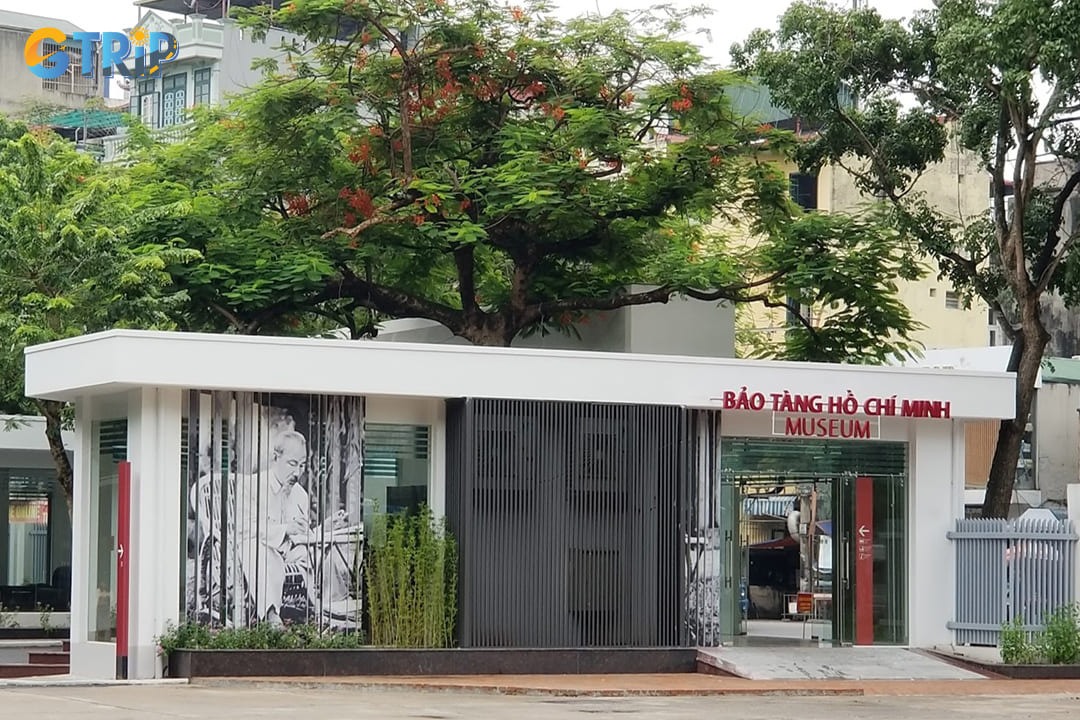
The Ho Chi Minh Museum offers affordable access to visitors interested in learning about Vietnam's revolutionary leader
Opening hours
The Ho Chi Minh Museum maintains specific operating hours that visitors should note before planning their trip:
- Regular operating hours: 8:00 AM to 12:00 PM and 2:00 PM to 4:30 PM
- Open days: Tuesdays, Wednesdays, Thursdays, Saturdays, and Sundays
- Closed days: Mondays and Fridays (for maintenance and preservation work)
- Last admission: 30 minutes before closing time (11:30 AM for morning session and 4:00 PM for afternoon session)
Special considerations:
- The museum may have adjusted hours during Vietnamese national holidays
- During peak tourist season (May-September), arriving early in the morning is recommended to avoid crowds
- The lunch break closure between 12:00 PM and 2:00 PM is strictly observed, and visitors must exit the premises
- Photography is permitted in most areas without flash, but video recording requires special permission
Best times to visit:
- Weekday mornings tend to be less crowded than weekends
- The first hours after opening (8:00-9:30 AM) typically offer the most peaceful experience
- Allow approximately 1.5-2 hours for a comprehensive visit to all exhibitions
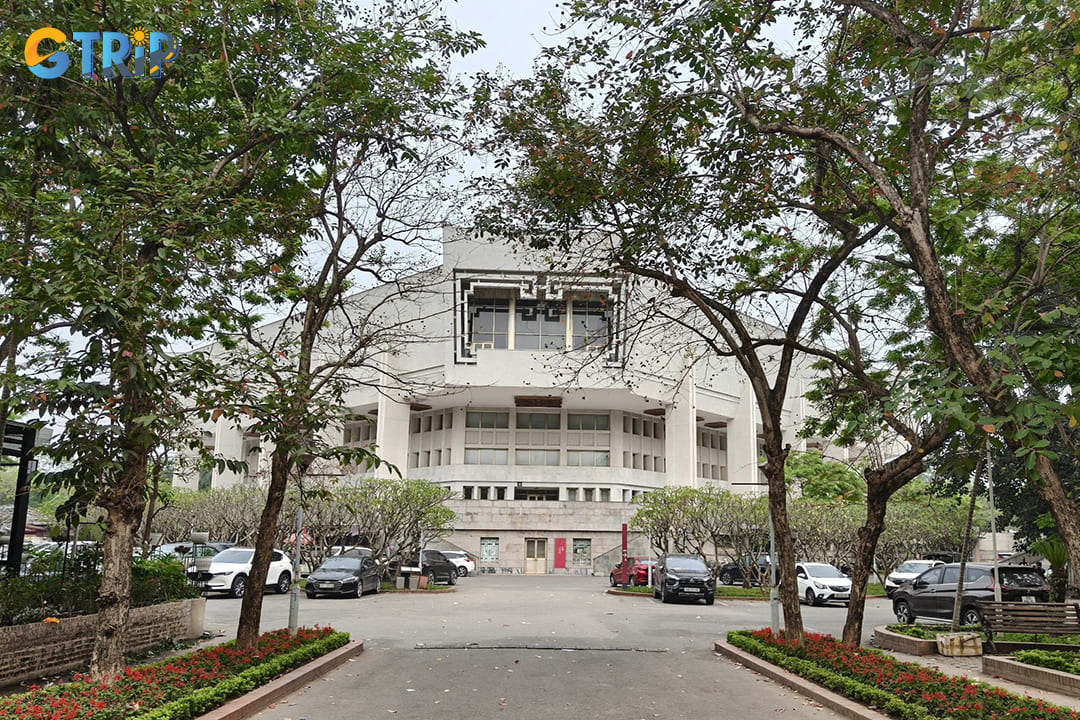
The Ho Chi Minh Museum maintains specific operating hours that visitors should note before planning their trip
Explore exhibitions in the Ho Chi Minh Museum
The Ho Chi Minh Museum houses one of Vietnam's most comprehensive collections dedicated to the life and legacy of its revolutionary leader. Spanning three distinct floors, the museum combines traditional displays with modern artistic installations to create an immersive journey through Vietnamese history and Ho Chi Minh's extraordinary life story.
First floor: Chronological life journey
The first floor offers visitors a detailed chronological exploration of Ho Chi Minh's life through nine thematic exhibitions. Each theme represents a significant period or aspect of his journey from humble beginnings to becoming the founding father of modern Vietnam.
Theme 1: Early years (1890-1910)
This section transports visitors to late 19th-century Vietnam, showcasing Ho Chi Minh's formative years in Nghe An Province. Through family photographs, personal letters, and recreated settings of traditional Vietnamese village life, visitors gain insight into the cultural and familial influences that shaped young Nguyen Sinh Cung (Ho Chi Minh's birth name).
- Key exhibits include:
- Ho Chi Minh's childhood home reconstruction
- Family photographs with parents Nguyen Sinh Sac and Hoang Thi Loan
- Traditional farming implements representing rural life in central Vietnam
- Early school materials show his initial education
Theme 2: World journey (1911-1920)
This compelling exhibition chronicles Ho Chi Minh's transformative decade of global travel as he sought inspiration and support for Vietnam's independence. The displays map his extraordinary journey across continents, working various jobs while developing his political consciousness.
- Countries featured in the exhibition:
- France
- United States
- United Kingdom
- Soviet Union
- China
- Thailand
The exhibition includes his various passports, employment records, and vivid photographic timelines. They show how these international experiences broadened his worldview and revolutionary thinking.
Theme 3: Ho Chi Minh in France
This section focuses specifically on Ho Chi Minh's pivotal time in France, where his political ideology crystallized amid the intellectual ferment of post-WWI Europe. Visitors can view authentic documents from his participation in the French Socialist Party and subsequent founding of the French Communist Party.
- Highlighted artifacts:
- Original copies of "Le Paria" newspaper, where he published articles
- Meeting minutes from early communist gatherings
- Letters exchanged with French intellectual contemporaries
- His modest living quarters were recreated with period furniture
- Work permits and identification documents from his time in France
Theme 4: Ideological development
This thought-provoking exhibition examines Ho Chi Minh's intellectual journey as he synthesized Marxist-Leninist principles with Vietnamese cultural traditions. Through manuscripts, publications, and multimedia presentations, visitors gain an understanding of how he adapted global revolutionary theories to Vietnam's specific circumstances.
The displays include:
- Early drafts of "The Path to Revolution"
- Annotated copies of Marxist texts in multiple languages
- Correspondence with contemporary revolutionary thinkers
- Interactive displays explaining key concepts in his political philosophy
- Audio recordings of his speeches on national liberation
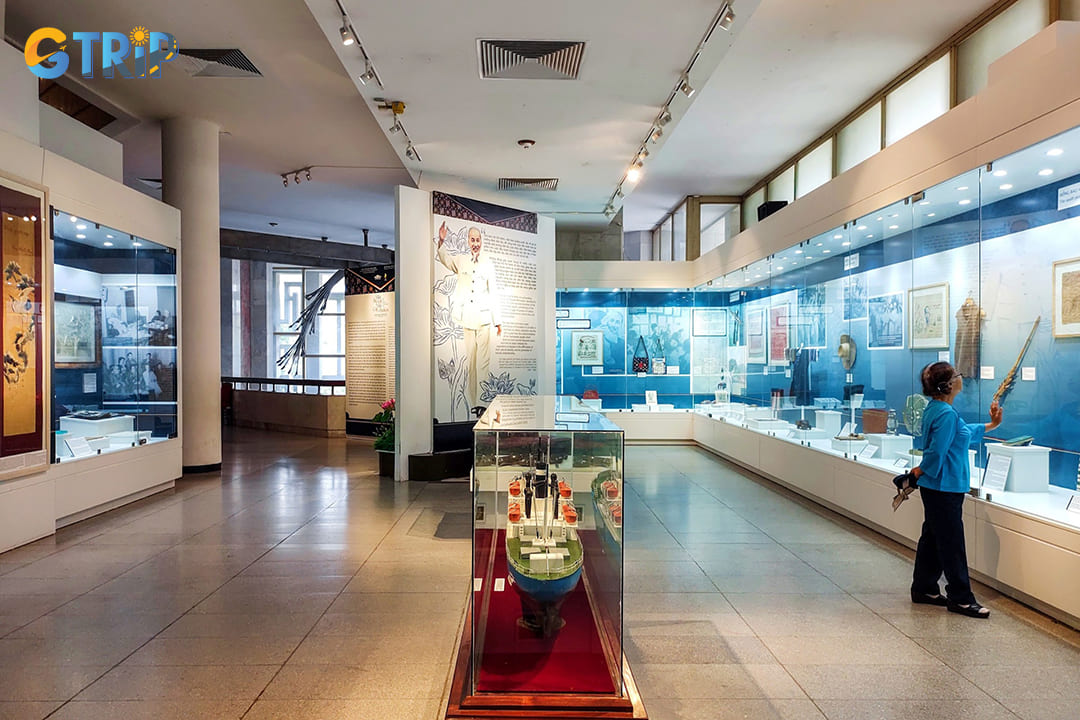
The first floor offers visitors a detailed chronological exploration of Ho Chi Minh's life through nine thematic exhibitions
Theme 5: Party foundation and struggle (1920-1945)
This expansive section documents the challenging period of establishing the Communist Party of Vietnam and Ho Chi Minh's perseverance through imprisonment and exile. The exhibition powerfully portrays the growing resistance movement against both French colonialism and Japanese occupation.
| Historical period | Key events | Featured artifacts |
|---|---|---|
| 1930-1931 | Foundation of the Indochinese Communist Party | Original party manifesto, meeting records |
| 1931-1933 | Ho Chi Minh's imprisonment in Hong Kong | Prison diary, letters, and personal effects |
| 1938-1941 | Activities in Guangxi, China | Revolutionary publications, training manuals |
| 1941-1945 | Return to Vietnam, resistance leadership | Weapons, underground communication devices |
Theme 6: Defense of new government (1945-1954)
This section chronicles the tumultuous period following the August Revolution when the fledgling Democratic Republic of Vietnam fought to preserve its independence. Dioramas and artifacts illustrate the strategic brilliance of Vietnamese forces despite limited resources.
You can examine:
- The original Declaration of Independence (September 2, 1945)
- Military maps showing defense strategies in the northwestern region
- Weapons and equipment used by early Vietnamese defense forces
- Communications equipment from the resistance headquarters
- Personal items belonging to key military leaders of this period
Theme 7: Nation-building and resistance (1954-1969)
This dual-focused exhibition portrays Ho Chi Minh's simultaneous leadership in rebuilding North Vietnam while supporting the liberation struggle in the South. The displays contrast peaceful development with wartime resistance through powerful imagery and authentic artifacts.
- North Vietnam development exhibits:
- Industrial development plans and models
- Educational reform documents
- Agricultural collectivization photographs
- Cultural revival initiatives
- Southern resistance exhibits:
- Underground communication networks
- Medical supplies for guerrilla forces
- Captured American military equipment
- Photographs of daily life on the Ho Chi Minh Trail
Theme 8: Final years and death (1969)
This poignant exhibition presents Ho Chi Minh's final period with respectful solemnity. You can view his modest living quarters, medical records, and the last political documents he authored. Large-scale photographs document the national mourning that followed his death.
The exhibition includes:
- Ho Chi Minh's final will
- Personal items from his last days
- Medical equipment used during his treatment
- Original footage of the state funeral
- International condolence messages from world leaders
Theme 9: National legacy
The concluding section of the first floor synthesizes Ho Chi Minh's enduring impact on Vietnamese society, politics, and culture. Through interactive displays, visitors explore how his philosophies continue to influence contemporary Vietnam.
- Legacy categories displayed:
- Political thought and governance principles
- Educational philosophy and literacy campaigns
- Diplomatic approaches and international relations
- Cultural values and national identity
- Economic development models
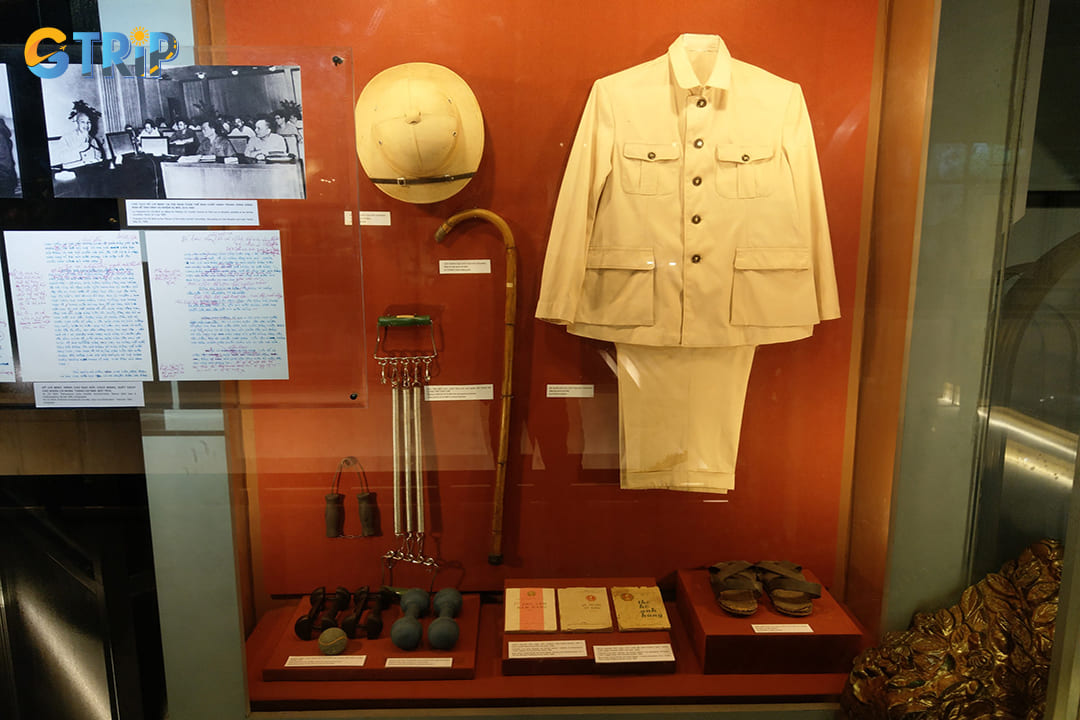
This poignant exhibition presents Ho Chi Minh's final period with respectful solemnity
Second floor: Revolutionary victory
The second floor breaks from chronological narrative to create immersive installations celebrating the Vietnamese revolutionary struggle. Unlike the documentary approach of the first floor, this level uses artistic representations and symbolic displays to evoke the emotional and historical significance of Vietnam's independence movement.
The exhibition combines authentic historical artifacts with contemporary artistic interpretations:
- Large-scale dioramas recreate decisive battle scenes
- Audio installations play recordings of revolutionary songs and speeches
- Glass cases display weapons, uniforms, and field equipment
- Interactive maps show the progression of liberation campaigns
- Medal displays honor to heroic participants in the revolutionary struggles
A highlight is the Victory Hall, featuring the actual tank that breached the gates of Independence Palace in Saigon on April 30, 1975, symbolizing the final reunification of Vietnam.
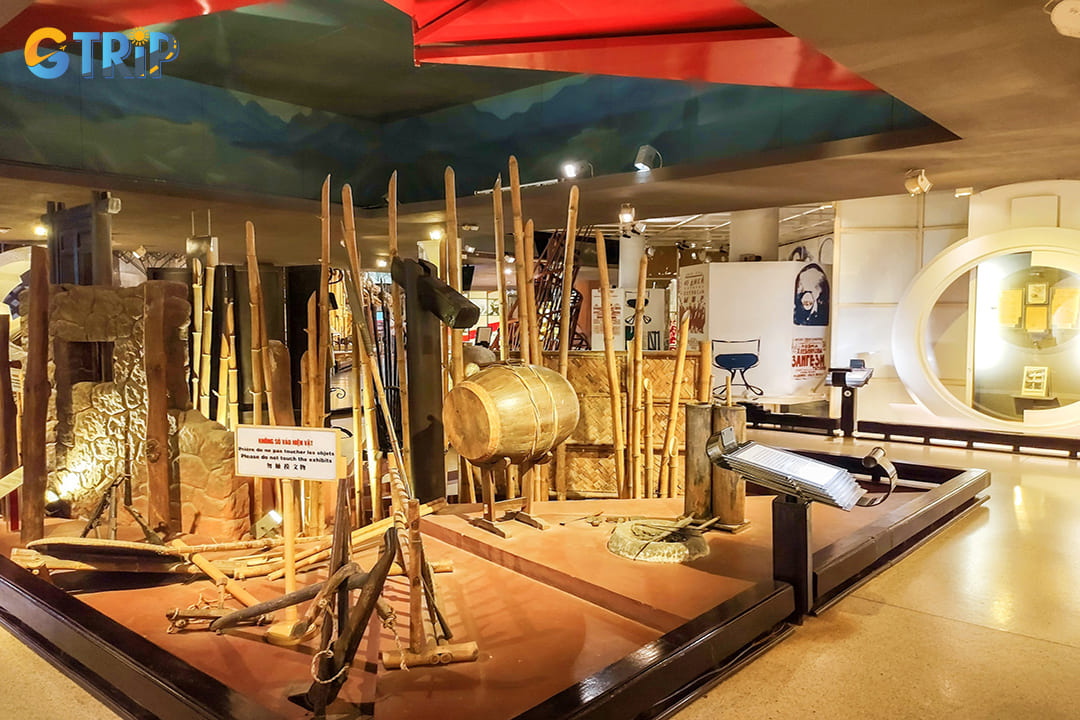
The second floor breaks from chronological narrative to create immersive installations celebrating the Vietnamese revolutionary struggle
Third floor: World historical context
The museum's top floor broadens the perspective by situating Ho Chi Minh's life within global historical developments. This contextual exhibition helps visitors understand how worldwide events influenced Vietnamese revolutionary thought and action.
- Major historical movements covered:
- The decline of colonial empires worldwide
- The Russian Revolution and the rise of communist movements
- World Wars I and II and their impact on Southeast Asia
- Post-WWII decolonization movements across Asia and Africa
- Cold War politics and their effect on Vietnam
Interactive timelines run parallel tracks showing Vietnamese developments alongside world events. This creates a comprehensive understanding of the international forces that shaped Ho Chi Minh's revolutionary path and Vietnam's struggle for independence.
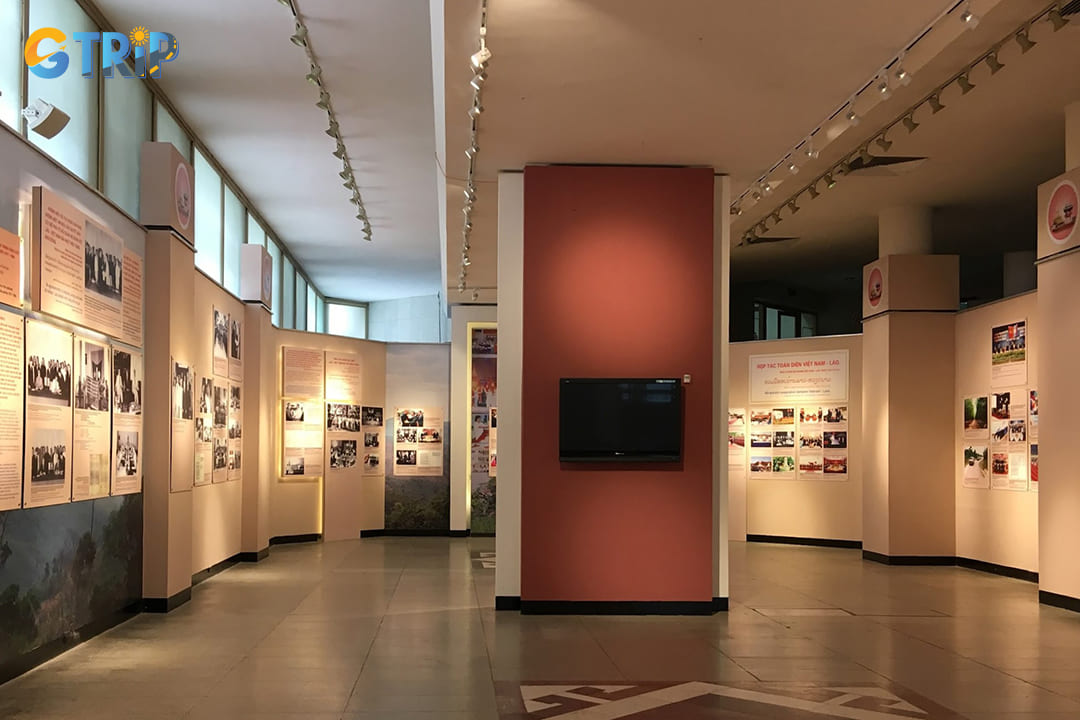
The museum's top floor broadens the perspective by situating Ho Chi Minh's life within global historical developments
Tips to remember when visiting the Ho Chi Minh Museum
The Ho Chi Minh Museum is a place of cultural significance and historical importance in Vietnam. To ensure a respectful and pleasant experience while honoring the legacy of Uncle Ho, visitors should follow specific guidelines. These protocols not only preserve the museum's integrity but also create a meaningful experience for everyone.
Dress code and proper etiquette
When planning your visit to the Ho Chi Minh Museum, appropriate attire is essential as a sign of respect:
- Modest clothing is mandatory. Shoulders and knees must be covered for all visitors
- Remove hats and caps before entering exhibition areas
- Speak quietly throughout your visit to maintain the solemn atmosphere
- Turn your mobile phones to silent mode to avoid disturbing other visitors
- Stand or walk in an orderly fashion, giving priority to elderly visitors, people with disabilities, and guided groups
The museum staff appreciates visitors who demonstrate respect through their appearance and behavior, as this iconic landmark holds deep significance for Vietnamese people.
Museum rules and prohibited items
For security and preservation purposes, certain restrictions are strictly enforced:
| Prohibited items | Permitted items | Special notes |
|---|---|---|
| Weapons and explosives | Small cameras (no flash) | Photography is allowed in designated areas only |
| Toxic or flammable substances | Notebooks and pens | No touching of exhibits |
| Large bags and luggage | Wallets and small purses | Luggage must be stored at the left-luggage office |
| Food and beverages | Water bottles | Must be kept sealed in exhibition areas |
| Cigarettes and lighters | Mobility aids | Smoking is prohibited throughout the complex |
All visitors must proceed through security screening before entering. The museum provides free storage facilities for larger belongings at the designated left-luggage office near the entrance.
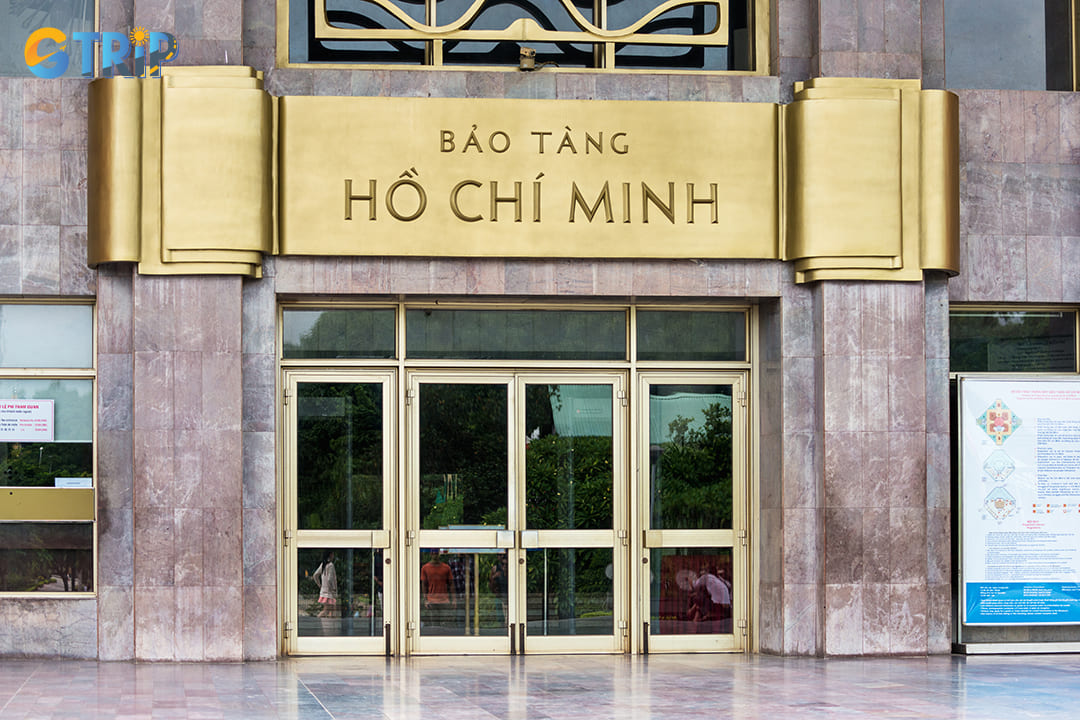
The Ho Chi Minh Museum is a place of cultural significance and historical importance in Vietnam
Enhancing your visit experience
To make the most of your time at the Ho Chi Minh Museum:
- Follow the recommended route indicated on museum maps to experience the exhibitions in their intended sequence
- Schedule 1.5 - 2 hours for a complete visit to properly appreciate all displays
- Consider hiring a guide through the Education Department for deeper insights (available in Vietnamese, English, French, Chinese, and Russian)
- Visit early in the day (8:00 - 10:00 AM) to avoid crowds, especially during Vietnamese holidays
- Take photographs only in permitted areas and never use flash photography, which can damage historical artifacts
- Maintain respectful silence in contemplative areas, particularly those dedicated to Ho Chi Minh's personal life
Remember that this museum isn't just a tourist attraction but a place of reverence for Vietnamese citizens honoring their national hero. Your respectful behavior contributes significantly to preserving the dignified atmosphere of this important cultural institution.
Other attractions inside the Ho Chi Minh Complex
While the Ho Chi Minh Museum offers profound insights into Uncle Ho's life and legacy, the surrounding Ho Chi Minh Complex houses several other historically significant attractions worth exploring. These sites complement your museum visit, providing a comprehensive understanding of Vietnam's revolutionary history and cultural heritage. Set aside at least half a day to fully appreciate these monuments located within walking distance of each other.
One Pillar Pagoda (250m)
Just a short 250-meter stroll from the museum stands the iconic One Pillar Pagoda (Chua Mot Cot), one of Vietnam's most distinctive Buddhist temples. Built in 1049 during the Ly Dynasty, this architectural masterpiece resembles a lotus flower blooming from a single stone pillar rising from a small pond. This symbolizes purity emerging from the muddy waters of suffering.
The pagoda's unique design reflects Emperor Ly Thai Tong's dream vision of the goddess of mercy, Quan Am, presenting him with a lotus flower. After the emperor's longed-for son was born, he constructed this temple as a token of gratitude. Though the original structure was destroyed during the French withdrawal in 1954, the carefully reconstructed pagoda maintains its spiritual significance and remains an active place of worship.
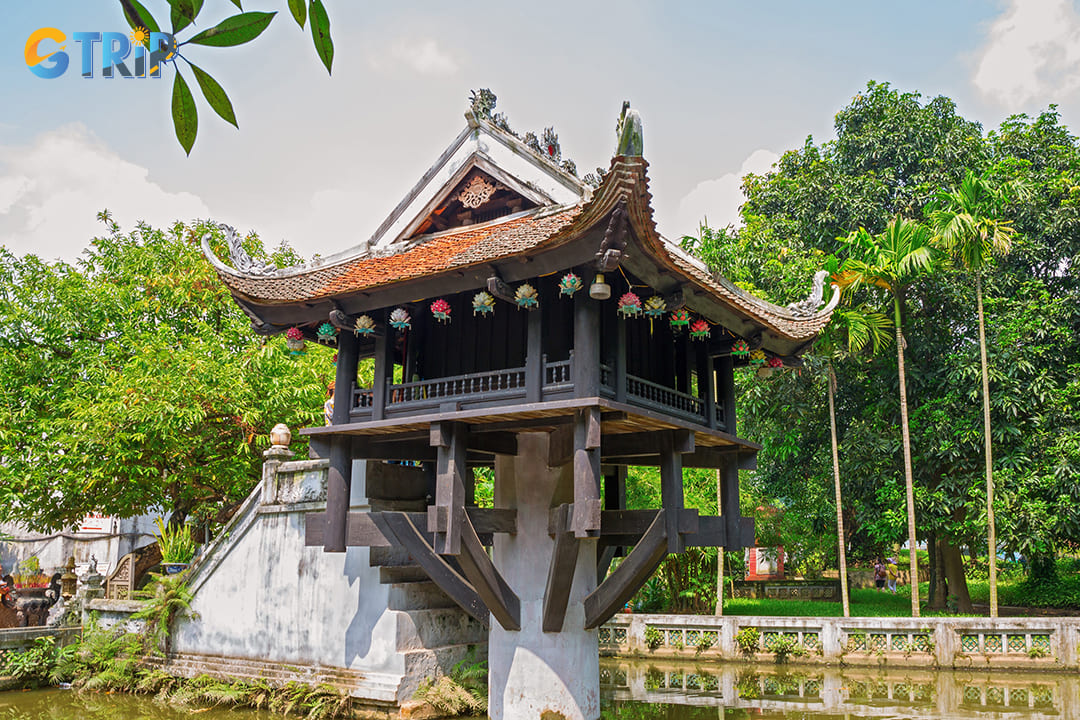
One Pillar Pagoda (Chua Mot Cot) is one of Vietnam's most distinctive Buddhist temples
Ba Dinh Square (500m)
The historic Ba Dinh Square serves as the political heart of Vietnam, where Ho Chi Minh proclaimed the country's independence on September 2, 1945. This expansive 320m by 100m open space is flanked by important government buildings and stands as a powerful symbol of Vietnamese sovereignty and national pride.
Early mornings at Ba Dinh Square feature the solemn flag-raising ceremony, accompanied by the national anthem, a moving experience that draws both locals and tourists. The square transforms throughout the day, becoming a popular gathering spot in the evenings where families stroll and children play. During national holidays and celebrations, the square hosts military parades and official ceremonies, showcasing its continued significance in contemporary Vietnamese society.
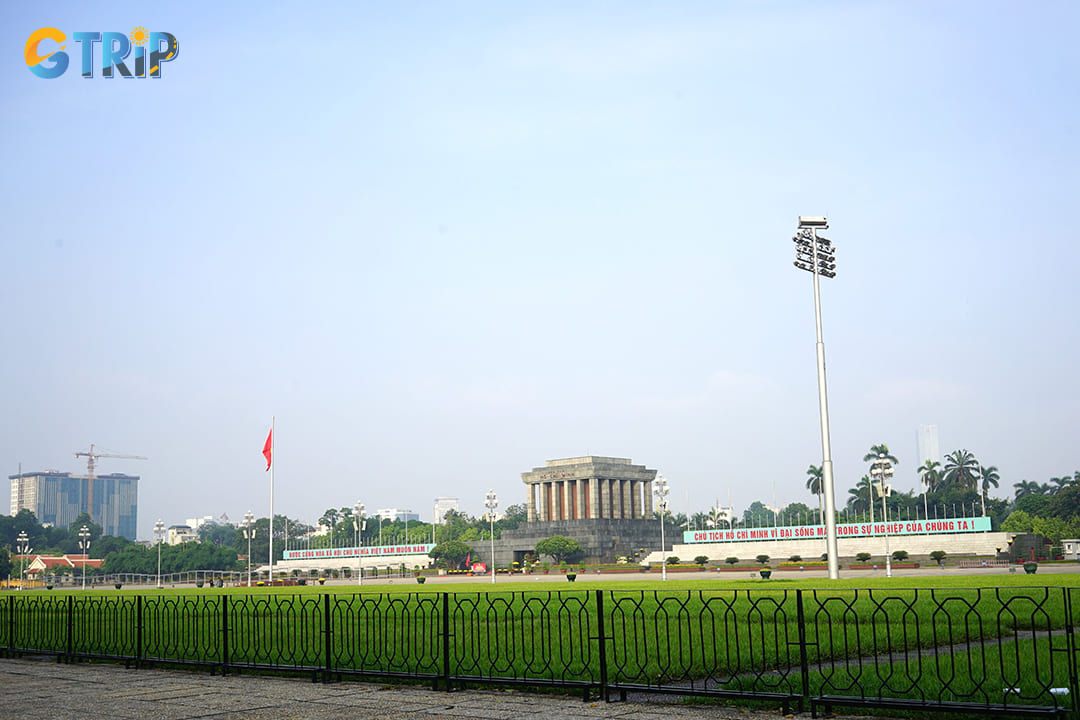
The historic Ba Dinh Square serves as the political heart of Vietnam, where Ho Chi Minh proclaimed the country's independence on September 2, 1945
Ho Chi Minh Mausoleum (500m)
The imposing granite Ho Chi Minh Mausoleum represents the nation's profound respect for its revolutionary leader. Completed in 1975, this monumental structure houses the preserved body of Ho Chi Minh despite his humble wishes for cremation. The building's architecture combines Vietnamese traditional elements with Soviet influence, featuring a three-tiered design with distinct Vietnamese motifs.
Inside, tourists file through in solemn silence to view Uncle Ho's body in a glass case, guarded by four white-uniformed soldiers standing motionless at each corner. This experience requires appropriate dress (covered shoulders and knees) and respectful behavior:
- No photography, talking, or hands in pockets
- Keep moving forward in the single-file line
- Maintain a respectful distance from the case
- Visit early (before 10 AM) to avoid long queues
The mausoleum closes annually for approximately two months (typically October-November) when the body is sent to Russia for maintenance.
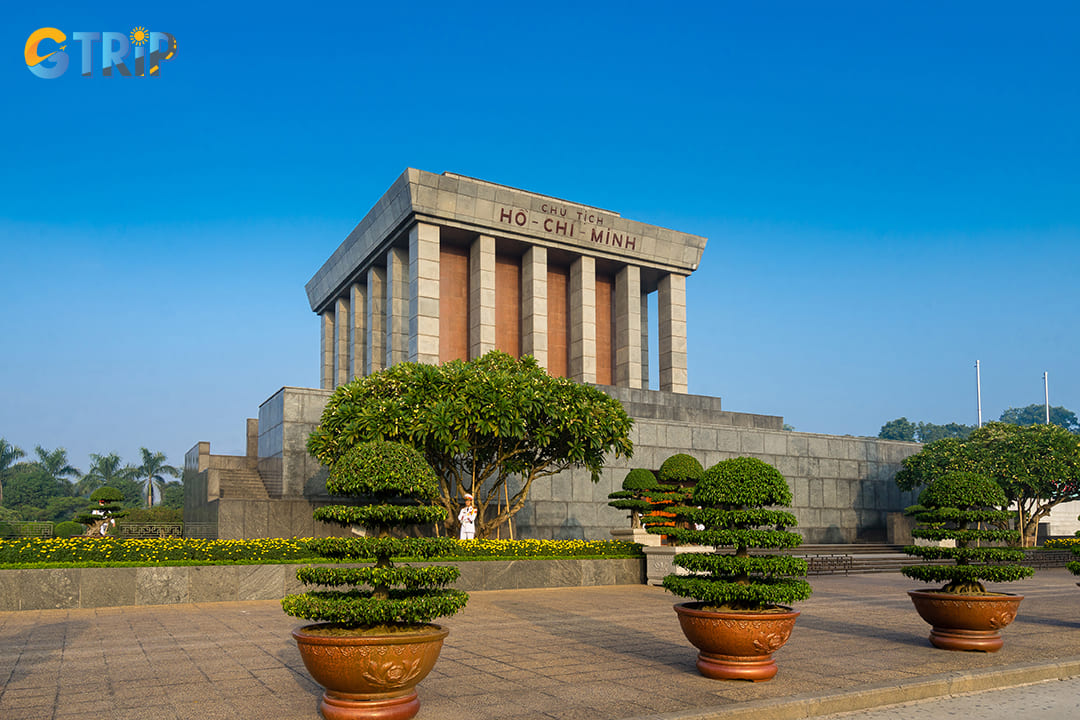
The imposing granite Ho Chi Minh Mausoleum represents the nation's profound respect for its revolutionary leader
Presidential Palace (600m)
The magnificent yellow Presidential Palace stands as a striking colonial remnant, built between 1900 and 1906 as the residence of the French Governor-General of Indochina. Though Ho Chi Minh refused to live in this opulent structure, preferring instead a modest stilt house in the gardens, the palace remains an important government building used for official state receptions and diplomatic functions.
While the palace interior remains closed to the public, visitors can explore the meticulously maintained grounds featuring:
| Area | Description |
|---|---|
| Gardens | Lush tropical landscaping with exotic plants and flowers |
| Carp pond | Tranquil water feature where Ho Chi Minh often sat |
| Stilt house | A simple wooden dwelling where Uncle Ho lived from 1958-1969 |
| Garage | Housing Ho Chi Minh's modest collection of vehicles |
Walking through these grounds provides insight into Ho Chi Minh's humble lifestyle and philosophy, a striking contrast to the grandiose palace he rejected. The preserved study, bedroom, and meeting rooms in his stilt house contain personal items and original furnishings that reflect his minimalist approach to life despite his position of power.
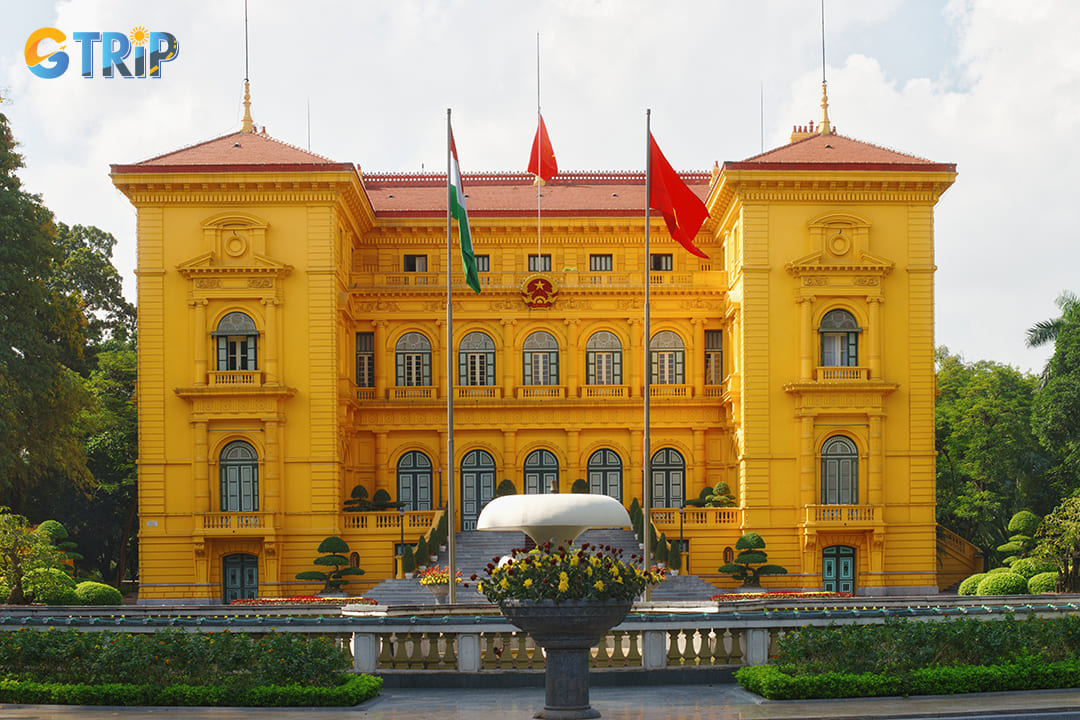
The magnificent yellow Presidential Palace stands as a striking colonial remnant, built between 1900 and 1906 as the residence of the French Governor-General of Indochina
Visiting the Ho Chi Minh Museum in Hanoi invites you to walk alongside a leader whose vision and perseverance helped shape a nation. As you ponder the exhibits, each artifact and story deepens your appreciation for Vietnam’s journey, leaving an indelible impression of cultural richness and resilience. For those who seek meaningful experiences, this exploration enriches your understanding far beyond surface impressions. Now that you've journeyed through this vibrant tapestry of history, consider how these insights can shape your travel aspirations further. If you want to explore more deeply about this museum and other attractions in Hanoi, you should book Hanoi tours of GTrip - Vietnam Travel Agency.

